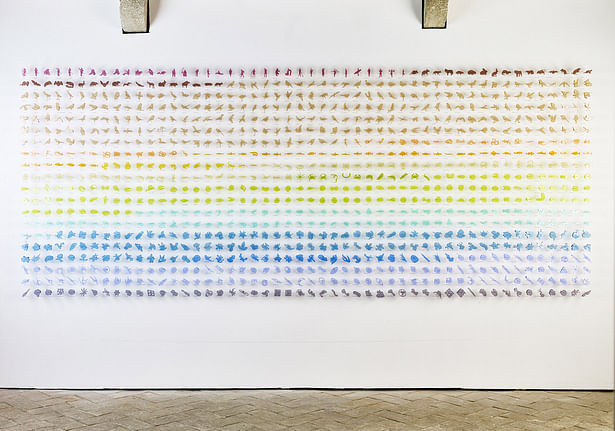
Rotterdam, NL

During the 2016 Venice Biennale 'Reporting from the Front' LOLA landscape architects presents their vision for the Solana Ulcinj at the Montenegro pavilion. The former salina site in the south of Montenegro faces major challenges in the future in order to remain a wildlife sanctuary for migratory birds.
Once the salina of Ulcinj produced valuable salt, but after the privatization the facility has gone bankrupt and the water pumps have been demolished. The discontinued salt production makes the future existence of the Solana Ulcinj as a wildlife sanctuary uncertain even though the area is of great value for countless bird species that cross the Adriatic Sea on the route of the Adriatic Flyway each year.
Salty, nutrient rich, shallow water pumped into evaporation basins resulted in the massive presence of birds in the salina. In turn, birds resulted in the presence of birdwatchers. Birdwatchers resulted in hospitality jobs: thus, the saline pyramid of species. To get the pyramid stable and working again, it is essential to restart the pumps to secure the future and guarantee a basic biodiversity of the Solana Ulcinj.
That's not enough though. The salina could generate more colors, more wildlife, more visitors and more jobs. The way to sustain this is to create hyperdiversity: a maximized biodiversity through slight variations in salinity, shelter, nutrients, shading, etc. More variety means more biodiversity. More biodiversity means more visitors. The people of Ulcinj are welcome to benefit if they contribute to the hyperdiversity: an investment in the ecological variations in the framework of the Solana Ulcinj.
There are many possibilities to trigger ecological variations. For instance, a hotel owner could make a panorama point for birdwatchers inside one of the basins. Its base would influence the water flow: water will become stagnant behind it, sedimentation will occur and plants will start to grow. Farmers (for shrimps) and beauticians (for mud) are welcome too. On one condition: their activities should benefit the presence of birds.
When it comes to the salt itself, the only way to make the production of salt in the Solana Ulcinj viable, is to the reduce costs of the production and increase the value of the product. Make use of machines or invite volunteers to come in and spend their holiday harvesting salt. Create something special: produce flamingo salt for flamingo fanatics around the world!
The Solana Ulcinj is the place where an example can be set; where we can really show that we learn from mistakes and show that nature can actually bounce back; where we can learn that nature can benefit from our presence as human beings instead of only the either way around. All of this can happen when we take responsibility, and make it a joint effort from all of us. Only then the Solana Ulcinj can reach its full ecological potential of 1000 species.
The project is on view at the Montenegro pavilion (Palazzo Malipiero) in Venice until the 27th of November 2016. Project Solana, commissioned by Dijana Vucinic of the Montenegrin Ministry of Sustainable development and Tourism is curated by Bart Lootsma and Katharina Weinberger. The Montenegro Pavilion was voted one of the Top 10 pavilions at this year's Biennale by Dezeen.
Status: Built
Location: Ulcinj, CS // Venice, IT
Firm Role: Landscape Architect